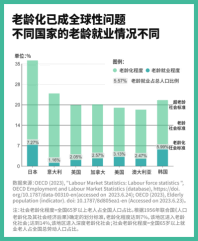The reasons for the leading growth rates of these cities have been found. The GDP data of the first three quarters of the Yangtze River Delta are released.
The GDP of all provinces and cities in the Yangtze River Delta in the first three quarters has been released. We use data to look at the economic trends of three provinces, one city and each city.
From a provincial level, Jiangsu's total GDP reached 9.318 billion yuan, and the gap with Guangdong Province has further narrowed. Zhejiang's GDP in the first three quarters was 5.9182 billion yuan, ranking fourth in the country, and Anhui ranked among the top ten in the country with 3.5653 billion yuan.
The economic growth of three provinces and one city exceeded that of the whole country. Among them, Zhejiang Province had the fastest growth rate in the first three quarters, reaching 6.3%. There is basically no suspense about achieving the annual target of more than 5%. The growth rates of Anhui and Shanghai are 6.1% and 6% respectively. Anhui's annual growth rate target of 6.5% is the highest among the three provinces and one city. Anhui will continue to make efforts in the fourth quarter.
Although Jiangsu’s growth rate ranks last among the three provinces and one city, its economy is the largest. In the third quarter of this year, Jiangsu successfully entered 9 trillion for the first time, and its growth rate has exceeded that of Guangdong of the same size.

Shanghai's GDP in the first three quarters was 3.3019 billion yuan, continuing to top the list of the largest cities in the country in terms of GDP.
From the perspective of GDP growth, Shanghai is not lagging behind. The GDP growth rate of 6% ranks fifth among the 24 trillion-dollar cities in the country.
In terms of individual data, mainly industrial and import and export data, there was negative year-on-year growth in the third quarter, which dragged down the overall data this year. However, firstly, it is necessary to consider that Shanghai data was higher in the third quarter of last year, and secondly, we must also see that this year Changes in the overall external environment, especially Shanghai's 2.7% import and export growth rate in the first three quarters, are among the highest in the country.
Calculating the two-year average growth, Shanghai's import and export in the first three quarters increased by an average of 4.1% compared with 2021, close to the national two-year average growth rate of 4.3%. Entering September, there is an even better trend. In September, Shanghai's import and export volume reached 374.47 billion yuan, the highest value in the past 12 months, with a month-on-month increase of 8%. Among them, exports were 159.85 billion yuan, a month-on-month increase of 10.4%; imports were 214.62 billion yuan, a month-on-month increase of 6.3%.
The Yangtze River Delta not only has a large number of trillion-dollar cities, but also has a rapid growth rate.
In addition to Shanghai's growth rate reaching 6% in the first three quarters, among the eight trillion-dollar cities in the Yangtze River Delta, there are also Hefei, Hangzhou, Wuxi, Ningbo, Nantong and other cities whose growth rates outperform the country's and are very prominent nationwide.
Stocks with the potential to hit trillions are also attracting attention. As early as two years ago, many cities in the Yangtze River Delta shouted the slogan of hitting one trillion yuan. For example, Xuzhou, Wenzhou, Shaoxing, Jiaxing, etc. have all stated that they will anchor a trillion goal during the "14th Five-Year Plan" period.
Currently, Changzhou is the Yangtze River Delta city closest to this goal.
Changzhou's GDP in the first three quarters reached 700.61 billion yuan, with a year-on-year growth rate of 6.7%. Not only is the economic scale the closest among several cities with a trillion-dollar impact, Changzhou has also developed its own unique advantages in the new energy industry in recent years.
The output value of Changzhou's new energy manufacturing sector increased by 19.9%, of which the output value of the three new energy industries of new energy vehicles, power batteries, and photovoltaics increased by 146.8%, 8.5%, and 11.0% respectively. The total industrial output value above designated size increased by 6.2%. Led by the new energy industry, the growth rate of Changzhou's industrial added value has ranked first in southern Jiangsu for 18 consecutive months.
Among larger cities, the growth rates of Suzhou and Nanjing slowed down considerably in the first three quarters, reaching 4.2% and 4.5% respectively.
Against the background of declining external demand, export-oriented cities like Suzhou, which mainly focus on processing trade and have a high proportion of orders from Europe and the United States, have been most obviously affected. At the same time, due to the high base in the same period last year, Suzhou's foreign trade showed negative year-on-year growth in the first three quarters, with total import and export falling by 9.7% year-on-year.
In Nanjing, the growth rate of the secondary industry slowed down. The added value of the secondary industry was 433.233 billion yuan, an increase of 2.9%. The added value of the city's above-scale industries increased by 3.4% year-on-year. Although the aerospace and equipment manufacturing industry, electrical machinery and equipment manufacturing industry, and new energy automobile industry are developing well, industries such as electronic manufacturing and steel have declined significantly.
Judging from the GDP growth rate in the first three quarters, among the top ten cities in the Yangtze River Delta, the North Jiangsu region occupies three seats, namely Lianyungang, Suqian and Huai'an, which rank first.
So, what do these cities in northern Jiangsu rely on to achieve high growth?
From an industrial perspective, the GDP growth rates of cities in northern Jiangsu are driven by high-tech industries.
Take Lianyungang as an example. As the Yangtze River Delta city with the highest GDP growth rate, Lianyungang has not only driven the added value of the secondary industry to increase by 20.6% year-on-year through Shenghong Refining and Chemical, China International Recycling Industrial Park and other high-tech-supported projects. , also drove the city’s fixed asset investment and industrial investment to increase by 33.3% and 41.4% respectively year-on-year.
As the youngest prefecture-level city in Jiangsu, in the first three quarters of 2023, Suqian's total industrial output value increased by 11.4% year-on-year, and about 90% of the city's industrial output value was composed of six major industries including new energy, high-end textiles, and green food. Leading industry transportation. This year, Suqian's new energy industry has grown by 20% year-on-year, contributing nearly one-third of the city's economic power.
Other small and medium-sized cities in the Yangtze River Delta should not be underestimated.
Among the top ten cities in terms of GDP growth, 5 cities including Quzhou, Lishui, Chizhou, Wenzhou, and Chuzhou use the same "playing method" to focus on the development of emerging industries such as strategic emerging industries, high-tech manufacturing, and core industries of the digital economy. , forming a synergistic effect with the growth of fixed asset investment.
The consumption recovery in these cities is also relatively satisfactory, and the total retail sales of consumer goods have increased. Taking Zhoushan as an example, in the first three quarters of this year, the added value of its accommodation and catering industry increased by 14.9% year-on-year, driving GDP growth by 0.2 percentage points.
In addition to industry, geography is also a factor worth noting.
On the one hand, some cities combine their own geographical advantages to promote economic development.
For example, the two cities of Lianyungang and Zhoushan have improved their foreign trade competitiveness through their own Lianyungang Port and Ningbo-Zhoushan Port, backed by the free trade pilot zone. Although faced with uncertain factors such as the international situation, the foreign trade operations of these two cities have increased steadily. In the first three quarters of this year, the total foreign trade import and export volume of Lianyungang and Ningbo was 91.84 billion yuan and 955.1 billion yuan respectively.
On the other hand, key cities drive the development of surrounding cities and create a radiation effect.
Half of the top ten cities in terms of GDP growth belong to Zhejiang Province, and two of them are co-organizers of the 2022 Hangzhou Asian Games, namely Shaoxing and Wenzhou. Driven by the Hangzhou Asian Games, the accommodation and catering industries in Shaoxing and Wenzhou grew by 14.5% and 17.9% respectively. Among them, Shaoxing’s fixed asset investment increased by 9.7% year-on-year.
In short, in the current complex and ever-changing international situation, economic growth not only comes from the vitality of the consumer market, but also from the support of key emerging industries. Correspondingly, if the city can also take into account the advantages of physical geography and administrative divisions, The engine of economic growth will accelerate even more.




